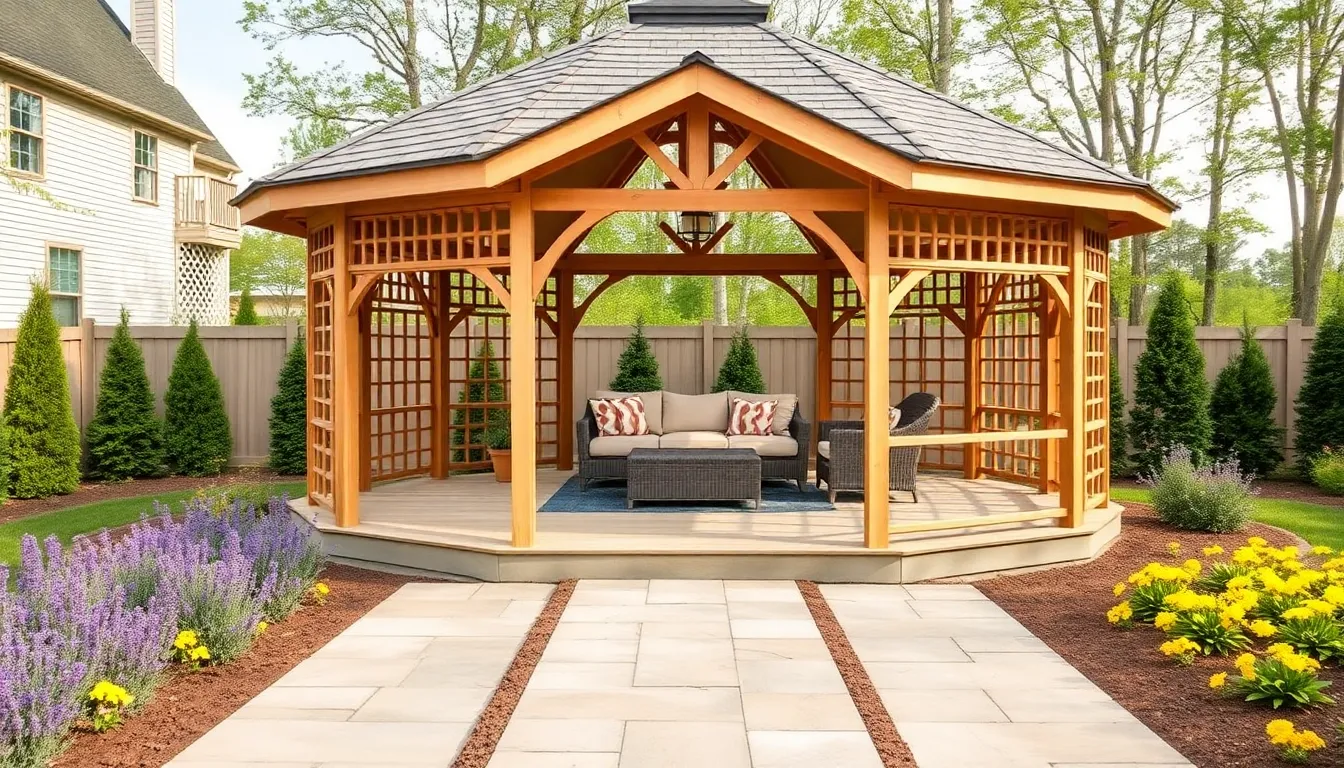Imagine stepping into your backyard oasis, where a beautifully crafted gazebo serves as both a tranquil retreat and a centerpiece for gatherings. Whether you’re a beginner eager to embark on your first DIY project or a seasoned homeowner looking to enhance your outdoor space, building your own gazebo is an empowering journey that transforms your vision into reality. This guide is your trusted companion, offering a clear, step-by-step checklist to navigate the exciting process of creating your own outdoor haven.
Here, you’ll discover the essentials of gazebo construction, from selecting the right materials to understanding the nuances of design and assembly. We’ll break down each step into manageable tasks, ensuring that every reader, regardless of experience, can confidently bring their dream gazebo to life. Join us as we delve into the art of outdoor living, where practical tips and encouraging guidance await to help you craft a space you’ll cherish for years to come.
Preparing Your Gazebo Building Site

Selecting the right location is crucial when preparing your gazebo building site. Choose a level area that has a solid foundation, ideally avoiding low spots where water might accumulate. If your yard is uneven, consider using a spirit level and stakes to mark the correct grade, adding or removing soil as necessary to achieve a flat surface. For a stable base, you might opt for a concrete slab or paving stones which provide excellent support and drainage.
Once your site is level, focus on the orientation of your gazebo to maximize comfort and aesthetics. Think about the sun’s path and prevailing winds; positioning your gazebo to take advantage of natural shade or to block wind can greatly enhance usability. Mark the gazebo’s perimeter with string and stakes to ensure your layout matches your plans. For added stability, consider using ground anchors or post bases, especially in wind-prone areas. This attention to detail will not only secure your structure but also create a welcoming outdoor retreat.
Gathering Essential Construction Tools

To construct a sturdy gazebo, gathering the right tools is essential. Ensure you have a complete set of basic tools, including a hammer, tape measure, level, and saw. For more precise cutting and assembly, consider using a power drill and circular saw. High-quality, durable tools can significantly improve your building experience, so investing in well-made equipment is worthwhile. If you’re working on uneven terrain, a laser level can help ensure your gazebo is perfectly aligned.
For those looking to enhance their construction skills, consider using a miter saw for angled cuts, which is especially useful for creating a decorative roof. Advanced users might also want to include a post-hole digger and concrete mixer to ensure a solid foundation. Organize your tools in advance to prevent interruptions during the building process.
- Check all tools for functionality before starting.
- Keep a backup battery for cordless tools.
This preparation will make your gazebo project smoother and more enjoyable.
Installing a Stable Foundation

Before you start assembling your gazebo, it’s crucial to establish a stable foundation to ensure its longevity and safety. Begin by selecting a suitable location that is level and free from obstructions such as tree roots or large rocks. For a solid base, consider using concrete pavers or a poured concrete slab, ensuring it is at least 4 inches thick for optimal stability. Measure the area carefully to match the dimensions of your gazebo, allowing for a little extra space on each side for adjustments.
Anchoring your gazebo is equally important to withstand wind and weather conditions. For those using concrete slabs, embed anchor bolts during the pouring process and attach the gazebo frame securely afterwards. If you’re working with pavers, use long, heavy-duty ground stakes or specialized gazebo anchor kits to fasten the structure in place.
- Regularly check and tighten fastenings to maintain structural integrity over time.
- For advanced stability, consider cross-bracing the gazebo frame, which helps to distribute weight evenly and provides additional support.
Establishing a secure foundation not only enhances safety but also adds to the aesthetic value and functionality of your outdoor space.
Assembling the Gazebo Framework

Now that your foundation is secure, it’s time to focus on assembling the gazebo framework. Begin by organizing all your materials, ensuring you have all necessary components such as beams, posts, and connectors. Use a level to ensure each piece is perfectly aligned, as this will prevent structural issues later. Secure the beams and posts using high-quality galvanized screws or bolts to resist rust and provide stability. Beginners should follow manufacturer instructions closely, while experienced builders might consider adding extra bracing for enhanced durability.
When constructing the framework, pay attention to both function and style. Start by erecting the corner posts, which typically serve as the primary support. Opt for pressure-treated wood or powder-coated metal for long-lasting resistance to the elements. For a snug fit, use a rubber mallet to gently coax pieces into place without damaging them. Advanced DIYers might explore decorative elements such as carved post caps or integrated lighting fixtures, adding a personal touch to their gazebo. Remember, taking your time during this stage ensures a safe and beautiful structure that complements your outdoor space.
Finishing Touches and Maintenance Tips

To add the perfect finishing touches to your gazebo, consider incorporating elements like comfortable seating and weather-resistant decorations. Outdoor-rated fabrics for cushions and curtains not only enhance comfort but also withstand the elements, ensuring durability. Adding string lights or lanterns can create a cozy ambiance for evening gatherings, while potted plants around the base can integrate the structure seamlessly into your garden landscape.
Regular maintenance will keep your gazebo looking pristine and prolong its lifespan. Inspect the structure annually for signs of wear, such as loose bolts or damaged wood, and address these issues promptly. Apply a fresh coat of weatherproof sealant every few years to protect wooden elements from moisture and UV damage. Additionally, cleaning the roof and ensuring proper drainage can prevent water accumulation, which can lead to structural issues over time.
Conclusion: Creating Beautiful Outdoor Spaces
Building a gazebo, much like nurturing a relationship, requires careful planning, clear communication, and a shared vision. In this article, we covered five key relationship concepts: laying a strong foundation through trust, the importance of communication as the supportive framework, setting mutual goals as your blueprint for success, being adaptable to changes as your weatherproofing strategy, and celebrating milestones to reinforce the structure’s beauty and strength.
To bring these concepts to life, take a moment today to initiate an open conversation with your partner about your shared goals and dreams. This simple step can set the tone for a more connected and harmonious relationship.
Don’t let these valuable insights slip away. Bookmark this article as a handy guide to revisit whenever you need a refresher. By doing so, you’ll have a ready resource to help fortify your relationship at every stage.
Remember, the journey to relationship success is ongoing and filled with opportunities for growth and joy. With the right tools and mindset, you and your partner can build a relationship as enduring and beautiful as a well-crafted gazebo.





